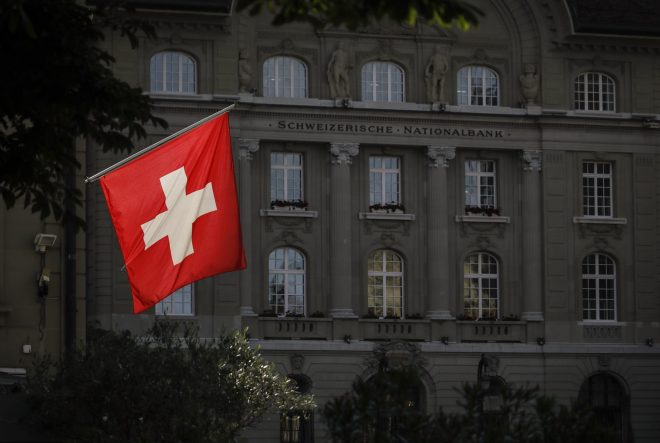Subscribe
Sign up for timely perspectives delivered to your inbox.

The Swiss franc is on an appreciating trajectory versus the euro. What can the central bank do to stem the rise?
The recent geopolitical volatility has upended asset markets across the globe. From commodities to bonds and equities, recent price moves have been on an historical scale. As uncertainty prevails, assets known for their haven qualities have received unprecedented interest. Among those, the Swiss franc is an outlier, appreciating significantly versus most currencies but especially versus the euro – Switzerland’s biggest trading partner.
The Swiss National Bank (SNB) has expressed its displeasure with the overvaluation levels of its currency on numerous occasions. The central bank and many economists put the fair value of the currency between 1.08‑1.12 versus the euro, yet, due to recent events, the currency continues to strengthen. The SNB has intervened repeatedly to stop the franc from appreciating but has only managed to slow the trajectory rather than stop or reverse it. In the past month alone, the currency has appreciated 5% versus the euro, at its lowest point intraday (Exhibit 1).
Source: Bloomberg, Janus Henderson Investors, as at 8 March 2022.The Swiss economy has fared better coming out of the pandemic compared to other global competitors; it has been successful in keeping costs down, while wage growth remains restrained. The relative independence of the country from fossil fuels has also shielded the country from the volatility in energy prices over the last few months.
Thus, as Switzerland’s inflation is fairly insulated from global price changes, recent price spikes in commodities do not impact the country as much as its neighbors. While full-year inflation forecasts for 2022 have been inching higher in Switzerland, they pale in comparison to the European Union on the same metric (Exhibit 2).
Source: Bloomberg, Janus Henderson Investors, as at 8 March 2022.As Switzerland has the world’s lowest interest rates at -0.75%,1 and the SNB is already active in intervening in the foreign exchange (forex) markets, the central bank’s options to reduce the lure of the currency for investors are limited. However, we believe there are three options that it can undertake to try to stabilize the currency, outlined in order of likelihood below.
Reassure markets on a lot more of the sameThe SNB was already voicing its discomfort with the level of currency appreciation before the recent geopolitical events, which accelerated that trend. As such, barring a significant unwinding of these pressures, we would not be surprised if the Swiss central bank were to announce measures to contain the speed and level of appreciation of its currency in the coming weeks.
1Trading Economics, as at 10 March 2022.Swissie: A casual term for the Swiss franc in foreign exchange markets.
Volatility: The rate and extent at which the price of a portfolio, security or index, moves up and down. If the price swings up and down with large movements, it has high volatility. If the price moves more slowly and to a lesser extent, it has lower volatility. It is used as a measure of the riskiness of an investment.